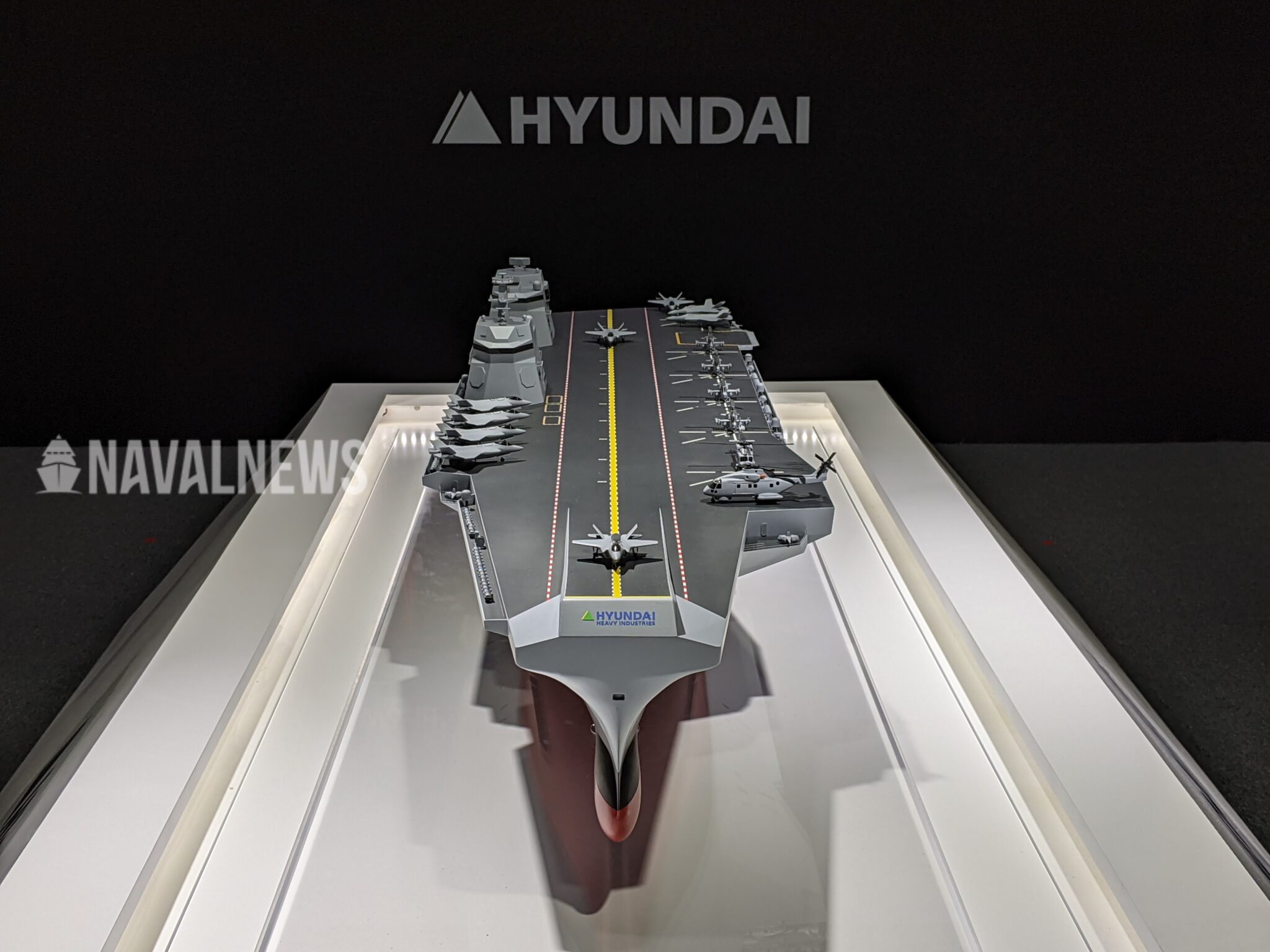Vis-a-vis North Korea, the South Korean concept for naval air/carrier capabilities is that it provides a far more survivable platform than land-based fighters. The idea bruited by Dacis2 that carriers are less survivable because they can be taken out with less hits is, in my view, unsatisfactory analysis in this case, as it doesn't take into account adversarial capabilities on the ground. That is to say, North Korea simply does not have the capability, in my opinion, to systematically, efficiently, and quickly find and target a carrier group at sea. The assets required, including a satellite network, maritime reconnaissance craft, their own carrier-based reconnaissance and fighter aircraft, etc., simply don't exist. And even if a needle in the haystack event occurs (a Nork vessel somehow stumbles upon the battle group by dumb luck before being promptly blown up), NK is not known to have the ranged precision strike weapons to attempt to overwhelm the defenses of a moving carrier battle group and successfully strike the carrier itself. As far as NK is concerned, the carrier group, if it doesn't anchor itself close to NK shores, may as well be on the moon.
Further, Dacis2's argument that land-based fighter assets are more advantageous because facilities are easier to repair ignores very real scenarios where fighter/strike capabilities are needed right now, not weeks or days or even hours from now. If waiting were always a viable option, then one could argue that they don't need an air force at all, since they can simply wait for the USAF and USN to arrive. This is a case of reductio ad absurdum.
As far as carrier capabilities are concerned, what SK is looking for with regard to its fighters vs. NK is not just air-to-air, but strike, and specifically with 2,000lb. bunker buster ordnance. This is one of the key operational reasons why SK had a problem with F-35Bs for its carriers. Unlike the Japanese very light carriers, one of the primary tasks of the South Korean carrier is to precisely apply the heavy spank on land targets. This fundamental difference in philosophy and mission is one of the reasons why Korean and Japanese carrier programs have so radically diverged.
Returning to the issue of SLOC protection, the Korean case is different from, and more perilous than, the Japanese case, because of the issues previously mentioned: the most serious threat to its primary SLOC routes, which are the southern approaches through the East China Sea, is a natural geographical bottleneck that the PLAN can more realistically contemplate attempting to take control of. It would present the prospect of having to fight a much larger, technologically peer navy in the PLAN.
SK's ability to punch a hole in a prospective cordon has both a strategic and a tactical component. From a strategic basis, this dictates that South Korea must work in coalition with others, first and foremost the US and the USN. From a tactical basis, any fleet-to-fleet action in which only one side brings naval AEWC and fighter assets is going to look pretty daunting and scary for the side without. To be sure, the USN brings naval air capabilities to the table, but given the changing calculus of balance of forces, SK's ability to bring additional such capabilities would potentially be significant.
In this use case, the advantages of operating range, endurance, and sensor capabilities that a larger CATOBAR carrier provides will very much come into play. This is exactly why the Chinese PLAN is aggressively building out a large carrier fleet that is now transitioning to CATOBAR vessels, notwithstanding the opinions of random internet commenters that such assets are obsolete or not survivable. My own view is that our initial assumption ought to be that the PLAN and the ROKN know their own needs and the challenges they face better than most casual observers do.
Taking this logic further, there is increasing recognition in Korea that such a coalition of regional partners is not a one-way street. While in the past SK was overwhelmingly a net beneficiary of principles of Western bloc collective security, it is now increasingly expected to be a net provider of security for the emerging Indo-Pacific security architecture, in line with its economic and military strength. This means the ability to project (naval) assets and capabilities beyond its immediate waters to aid fellow allies and partners. This, too, is a reason for the emphasis on strike capabilities, both land-attack and anti-ship, for its prospective carrier fleet, which is best provided by a large CATOBAR set-up.

